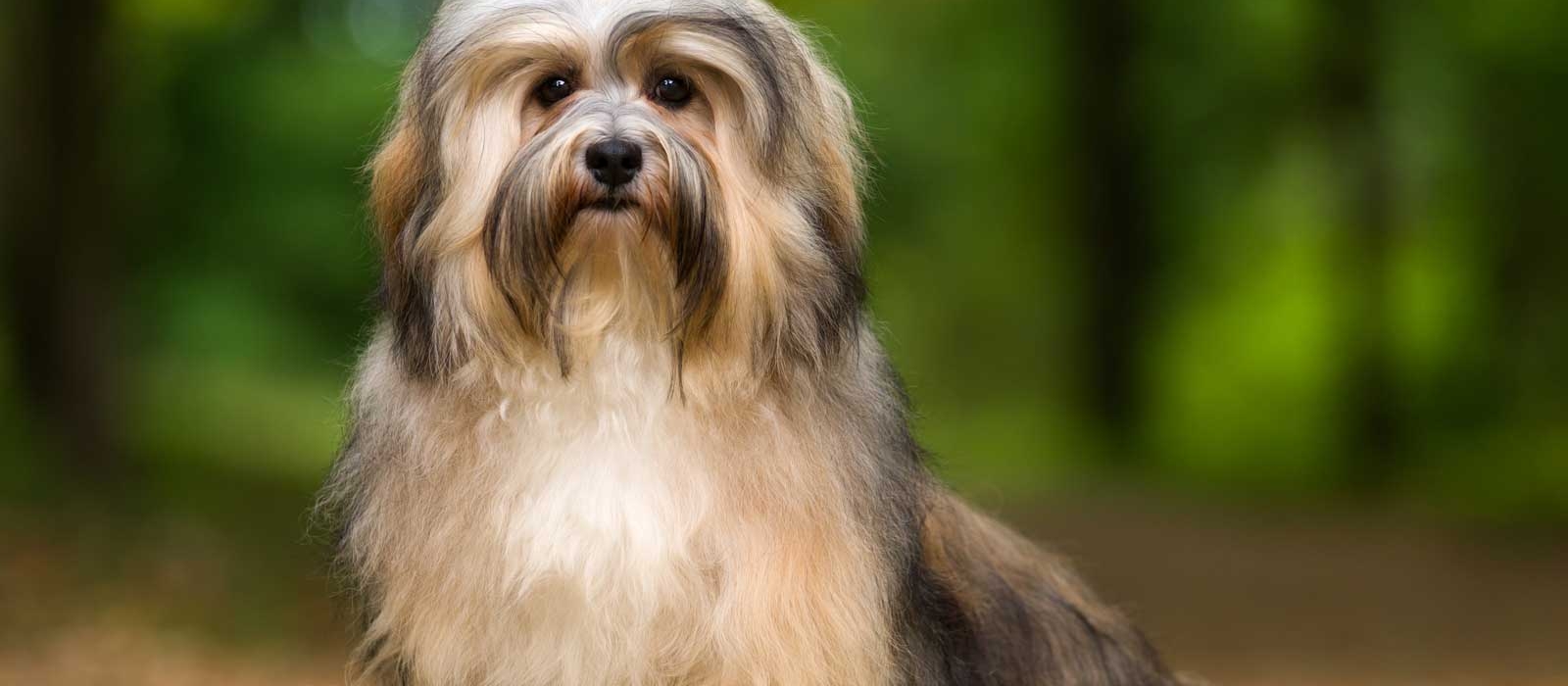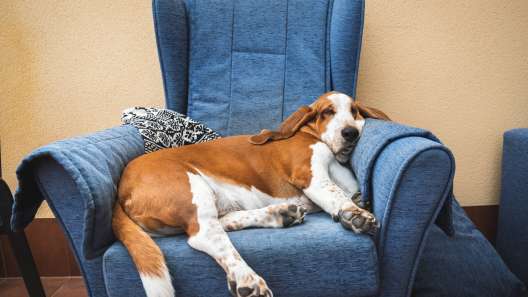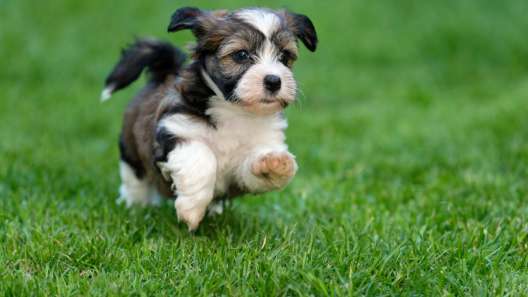-
Activity Level:
moderate
-
Shedding Level:
moderate
-
Grooming Level:
high
-
Trainability:
high
-
Good for Novice Owners:
high
-
Adaptability:
high
-
Kid/Pet Friendly:
often
-
Prey Drive:
moderate
-
Watchdog:
very alert
- Average Size: Small
- Average Lifespan: 14-16 years
- Registered?: aca, akc
Havanese Dog Breed Information
Overview
Temperament
Adaptability
Health
Owner Experience
Grooming
Activity Level
Size
Life Span
Did You Know?
The Havanese, once referred to as the Havana Silk Dog and the Spanish Silk Poodle, originated in Cuba and is part of the ancient Bichon family. The Bichon family refers to a group of little white dogs that are likely to have the Tenerife, a common ancient ancestor of the Maltese and the Bichon Frise. Havanese were not working dogs, but were valued lapdogs of Cuba’s wealthy planters and aristocrats. They were named for Havana, the capital city of Cuba.
During Fidel Castro’s revolution of the mid-1900s, wealthy Cubans fleeing to America brought their Havanese with them. From there, the Havanese grew in popularity and are now popular around the world. The American Kennel Club recognized the Havanese in 1996 as part of the Toy Group. They may be little, but they are sturdy and sociable dogs with larger-than-life personalities. They have a playful spirit and are happy to be a loved family companion.
This dog breed is friendly and intelligent. They love to play with their owners, tend to be quiet, and have a gentle nature. They tend to get along well with children and enjoy having a consistent playmate. Due to their small size, they can be injured by accidental falls or rough play, so any playtime with younger children should be supervised.
They have an outgoing personality and tend to get along well with other dogs, pets, and strangers. Although they are friendly and outgoing, they are alert and excellent watchdogs. They don’t tend to bark a lot, but will take being a watchdog seriously. A Havanese loves attention and will keep you laughing with their comedic antics.
This dog breed is highly adaptable. They are well-known as a favorite of apartment city-dwellers, but will also adapt well to larger homes with space to roam. They do well in many climates. As a native breed to Cuba, their coat acts as insulation and also as a barrier against the sun to help prevent overheating. However, you will still want to keep an eye on them in the heat. Due to their smaller size, they may need to layer up in climates with colder winters, but are able to adapt. Because they are social companions, they do not like to spend a lot of time alone.
The Havanese is a relatively healthy dog breed. Some potential health conditions to be aware of include deafness, eye disorders, Legg-Calve-Perthes disease, heart murmurs, patellar luxation, and chondrodysplasia. Asking the breeder about the genetic history of the parents and to see relevant health clearances can help allay health concerns. Because the Havanese is a small dog, they are also more prone to dental disease. Proper dental care throughout their lifetime can help prevent gum disease and tooth decay.
This dog breed is highly intelligent. Since they love attention and being around people, they are also eager to please. These traits make them highly trainable and a good fit for owners of experience level, as long as only positive training methods are used. Because they are so in-tune with people and eager to please, they are also very sensitive. They’ll take any harsh scolding or tones personally and could become withdrawn. They respond best to gentle training methods with plenty of patience and positivity.
The Havanese has a silky coat. It can be kept long or clipped short. They will need to be brushed regularly to keep their coat tangle-free. If their coat is longer, daily brushing or brushing every other day will be necessary to reduce tangles and mats. If their coat is clipped short, brushing every few days or weekly is likely sufficient. Regular brushing also helps remove loose fur, which keeps shedding contained to the brush instead of all over your home.
They only need to be bathed on occasion and as needed to maintain a healthy coat. Whether your Havanese has a long or short clip, you’ll need to make time for professional grooming several times a year in order to maintain their coat. You will also want to gently clean the corners of their eyes every day to prevent tear stains on the lighter-colored fur. In most cases, discoloration around a dog’s eyes and mouth is normal, especially on dogs with lighter fur.
In addition to coat care, there are other grooming tasks that every dog needs. You will need to trim your dog’s nails, check their ears regularly, and brush their teeth. Long nails can make it difficult and painful for your dog to move around, so keeping them short and trimmed is important. Usually, trimming your dog’s nails monthly is sufficient. If you’re already taking your Havanese to a professional groomer, they can likely help you keep your dog’s nails in check.
Dogs with ears that flop over are more prone to ear infections than ears that stand up straight because they are more prone to trapping dirt, debris, and moisture. By checking your dog’s ears regularly and cleaning them carefully as needed, you can help reduce the chance of ear infections and make your dog more comfortable too.
Good dental care for your dog is also important. Dental disease is one of the most common health issues in dogs and it is also the most preventable. Small dogs are more prone to developing dental disease, so it is especially important to take care of your Havanese’s teeth. Brushing your dog’s teeth daily is recommended and can be supplemented with dental chews, specific diets, or enzyme toothpaste.
A Havanese has a moderate activity level. They’re not couch potatoes, but they don’t need a ton of exercise to stay happy and healthy either. A daily walk and some playtime are all this dog needs. However, they can easily become overexerted. So, if your Havanese is panting heavily and starts struggling, it’s time for some cuddles and relaxation.
A fully-grown Havanese will usually stand 8.5 to 11.5 inches tall at the shoulder and weigh between 7 and 15 pounds.
This dog breed will generally live 14-16 years.
The Havanese is the only dog breed that is native to Cuba. Also, Charles Dickens, Queen Victoria, and Ernest Hemingway both owned a Havanese.









